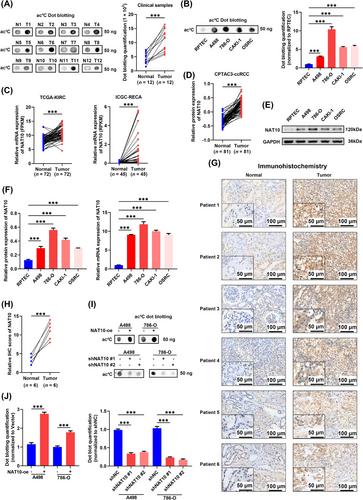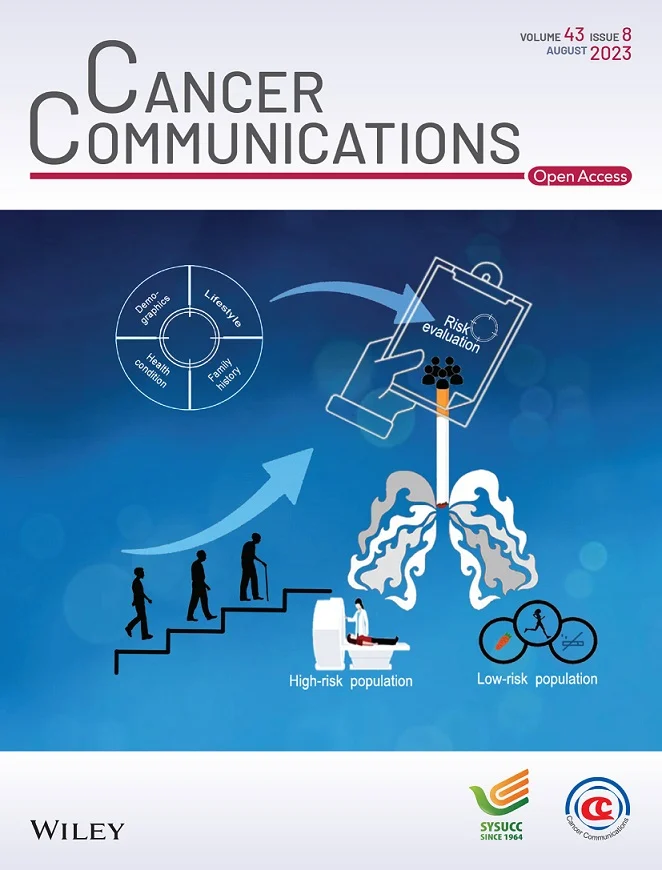NAT10-mediated ac4C-modified ANKZF1 promotes tumor progression and lymphangiogenesis in clear-cell renal cell carcinoma by attenuating YWHAE-driven cytoplasmic retention of YAP1
Abstract
Background
Lymphatic metastasis is one of the most common metastatic routes and indicates a poor prognosis in clear-cell renal cell carcinoma (ccRCC). N-acetyltransferase 10 (NAT10) is known to catalyze N4-acetylcytidine (ac4C) modification of mRNA and participate in many cellular processes. However, its role in the lymphangiogenic process of ccRCC has not been reported. This study aimed to elucidate the role of NAT10 in ccRCC lymphangiogenesis, providing valuable insights into potential therapeutic targets for intervention.
Methods
ac4C modification and NAT10 expression levels in ccRCC were assessed using public databases and clinical samples. Functional investigations involved manipulating NAT10 expression in cellular and mouse models to study its role in ccRCC. Mechanistic insights were gained through a combination of RNA sequencing, mass spectrometry, co-immunoprecipitation, RNA immunoprecipitation, immunofluorescence, and site-specific mutation analyses.
Results
We found that ac4C modification and NAT10 expression levels increased in ccRCC. NAT10 promoted tumor progression and lymphangiogenesis of ccRCC by enhancing the nuclear import of Yes1-associated transcriptional regulator (YAP1). Subsequently, we identified ankyrin repeat and zinc finger peptidyl tRNA hydrolase 1 (ANKZF1) as the functional target of NAT10, and its upregulation in ccRCC was caused by NAT10-mediated ac4C modification. Mechanistic analyses demonstrated that ANKZF1 interacted with tyrosine 3-monooxygenase/tryptophan 5-monooxygenase activation protein epsilon (YWHAE) to competitively inhibit cytoplasmic retention of YAP1, leading to transcriptional activation of pro-lymphangiogenic factors.
Conclusions
These results suggested a pro-cancer role of NAT10-mediated acetylation in ccRCC and identified the NAT10/ANKZF1/YAP1 axis as an under-reported pathway involving tumor progression and lymphangiogenesis in ccRCC.


 求助内容:
求助内容: 应助结果提醒方式:
应助结果提醒方式:


